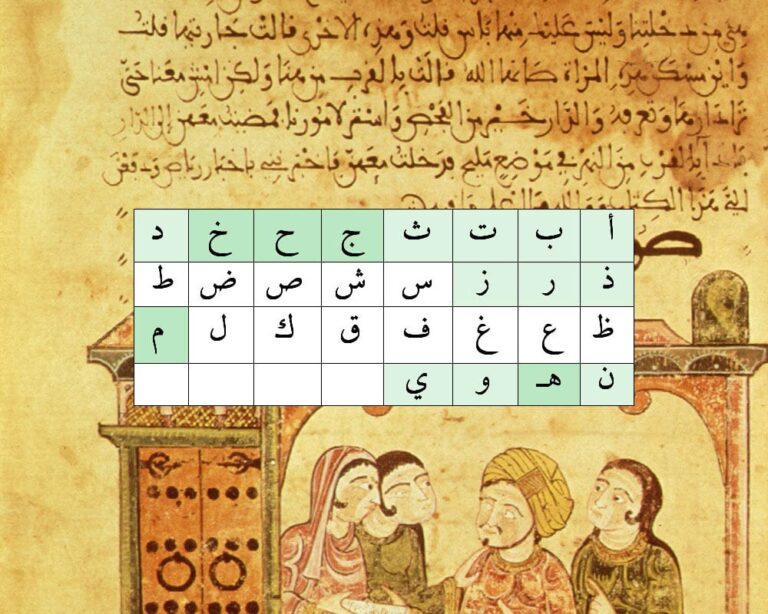Today we’re discovering five new letters, but only three shapes. And no insurmountable pronunciation difficulties either!
The letters in today’s group are called ‘beautiful’, because their very rounded shapes are used a lot in Arabic calligraphy. And they’re also widely used letters, so they’ll open the door to lots of new words!
And above all, if you look at the alphabet chart, with the letters we’ve seen in the previous two lessons in light green, and today’s letters in darker green, you can see that we’re over halfway through the alphabet, and that it wasn’t as complicated as all that!
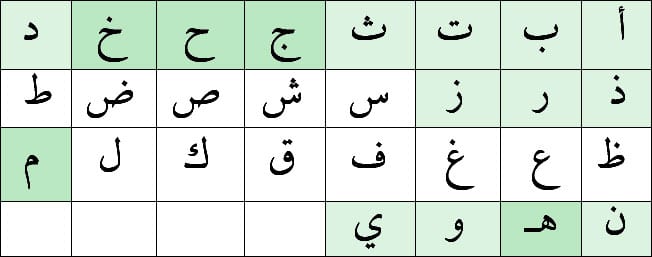
As usual, the video with Maha, pay close attention to the way she writes!
The ج “Jim”
In reality, this letter, which corresponds to our ‘J’, is pronounced ‘dj’ (like the English G).
It’s a letter with a very different shape, depending on whether it’s attached to other letters or not. At the beginning and in the middle of a word, it loses its pretty lower loop (but, of course, it keeps its dot).
Here are the different shapes of the printed Jim:

There are also different ways of drawing it manually. Very few people take the trouble to draw the start of the line going up, and actually press the Jim directly onto the line.
Here’s how you should write the Jim in theory:

And here’s what we find more generally

In this case, we draw it as a triangle. Some people draw a long triangle, as in the video, while others simply draw a small, normal triangle. The latter shape is easier to draw, but I recommend the former because :
- you won’t confuse it with another letter
- it’s easier to place the dots, and there’s less risk of them being confused with other neighbouring marks.
Thee ح : A strongly exhaled ‘H
If you’ve ever heard someone call you ‘Hassan’ in Arabic, you’ve got exactly the right sound – a slightly extended H. This is the normal H in English.
Not a very difficult letter!
The خ : an even more expired H
It’s a letter that has no equivalent in English, but it’s not very difficult (it’s more complicated to explain than to say, in fact). You breathe out in the same way as the ح , but by taking it from the back of your throat. It’s similar to the Spanish jota.
Here is an example of how it is pronounced: this is the beginning of the name Khadija ( خَدِيجَة ) (listen to just the beginning, as the person pronouncing it has a strong Egyptian accent, at the end she says ‘ga’ instead of ‘ja’)
The م : The M souns
Very simple to pronounce, and very easy to write! The Mim is a small circle with a tail, in the final or initial position. In theory, the circle is above the line. That’s what you see printed. But there are other round letters, and I advise you to write it below the line, so as not to risk confusion. The م alone is an abbreviation of Muhammad, the name of the Prophet.

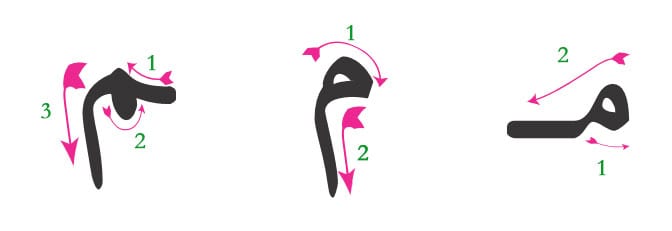
And ه which is the last ‘h’ sound
C’est un autre son “h” expiré. Elle ressemble un peu à un petit oeuf bien pointu.
Il est aussi très facile à tracer en position initiale : deux ronds l’un dans l’autre, il ressemble un peu à une arobase qui partirait vers la gauche. C’est sans doute pour éviter de la confondre avec le “Mîm” que le début de la lettre remontre au dessus du petit rond (mais n’oubliez pas : pour éviter tout risque, vous écrivez le Mim en dessous de la ligne ! )
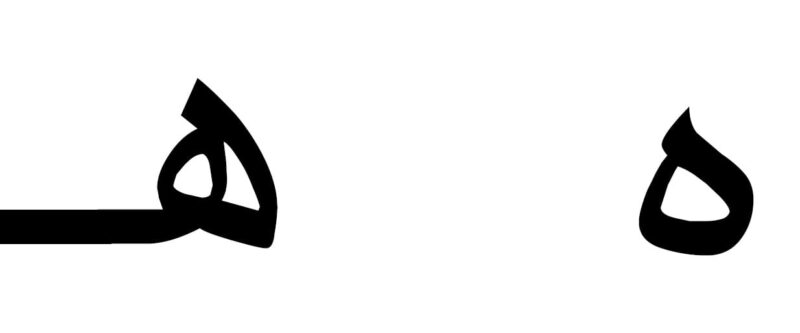
In the middle it’s a little more difficult, and there are four different versions: practise and choose the one that’s easiest for you (remembering that all the letters are drawn from the right). In its final position, the ه looks like a small flag. It’s ‘almost’ a triangle, which is why I recommend that you draw your ج , ح and خ elongated!
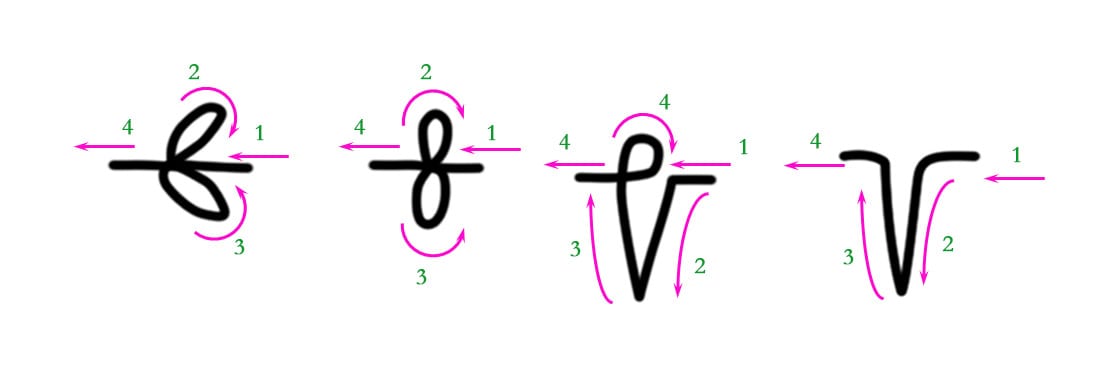
Words with new letters
حبيبي و حبيبة
A word with lots of upward legs, so we have to pay close attention to our dots, to recognise the letters in the first lesson, with the بي which are attached and repeated twice. So starting with the ح , ‘ha’ gives ‘Habibi’ , my love, my darling. And in feminine form, Habiba. Yes, another Arabic name with a very pretty meaning. and (Oum Habiba, the mother of Habiba)
جزر
A pretty little three-letter word, pronounced ‘Djazar’ and meaning ‘Island’. A little distorted, it can be found in the name of the city of Algiers and the country ‘Algeria’: the land of islands. It is also the name of the Arabic channel Al Djezeera.
زوج
Here, the ج is at the end of the word, so it’s pronounced almost like a simple ‘j’. Zaouj is the husband. And the bonus word, very important for many people: زواج we just add a ا to turn it into ‘zaouaj’, marriage. You see, how with a change of letter, simply, you keep the same basic meaning, but you ‘change’: the person doing the action, the action… it’s something you find a lot in Arabic, and helps you memorize your vocabulary!
and (you can hear how long the ا is).
موج
“Mau(d)j”, it’s the wave.
مها
It’s the name Maha, the name of our teacher in the video. !
حمار
‘Himar (if you’re on holiday in Morocco, it’s pronounced Hamar). It means donkey, and it’s also an insult (not a very strong one). Instead of saying ‘you dumbass’, we say ‘kind of donkey’, حمار Here is the pronunciation in classical Arabic (by a Saudi) and in Moroccan Arabic ! The ‘hi’ becomes a ‘ha’.
(I’ve added the option of listening to the words, by clicking on the little arrow-shaped icon. Use it and abuse it, because that’s how you get your ear used to the pronunciation of letters that don’t exist in English).
 A typo or syntax error? You can select the text and hit Ctrl+Enter to send us a message. Thank you! If this post interested you, maybe you can also leave a comment. We'd love to exchange with you !
A typo or syntax error? You can select the text and hit Ctrl+Enter to send us a message. Thank you! If this post interested you, maybe you can also leave a comment. We'd love to exchange with you !

